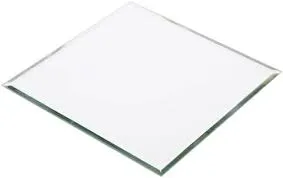

Exploring Extra Clear Float Glass A Modern Marvel in Glass Technology
In the realm of glass manufacturing, extra clear float glass has emerged as a revolutionary material, combining aesthetic appeal with functional excellence. This specialized type of glass, often referred to as low-iron glass, is renowned for its remarkable clarity and minimal green tint, setting it apart from traditional float glass. The advancements in glass technology have allowed extra clear float glass to become a preferred choice for architects, designers, and builders, leading to a plethora of innovative applications.
At the heart of its uniqueness lies the composition of extra clear float glass. Traditional float glass contains iron oxide, which imparts a slight green hue. However, during the production of extra clear float glass, manufacturers reduce the iron content significantly. This process not only enhances the transparency but also increases the glass's ability to transmit light, allowing a higher percentage of natural light to illuminate spaces. The result is a glass that displays colors with greater accuracy and vibrancy, making it an invaluable material for a variety of uses.
One of the most prominent applications of extra clear float glass is in architectural design. In modern buildings, large expanses of glass offer a seamless connection between the indoor and outdoor environments. The clarity of extra clear glass ensures that views remain unobstructed, promoting a sense of openness and flow. This is particularly beneficial in commercial spaces such as shopping malls and office buildings, where natural light can significantly enhance the ambiance. It also serves to reduce energy consumption by minimizing the need for artificial lighting during daylight hours.
Moreover, extra clear float glass works seamlessly with a range of decorative finishes
. When used in conjunction with reflective coatings or colored laminates, it allows for an interplay of light and shadow, creating stunning visual effects. This versatility makes it an ideal choice for design elements such as balustrades, partitions, and showcases, where the aesthetic appeal is as crucial as the structural integrity.
Beyond aesthetics, the durability and safety features of extra clear float glass also contribute to its popularity. It can be tempered or laminated to enhance its strength, making it suitable for high-traffic areas and environments that require additional safety measures. The combination of clarity and resilience ensures that extra clear float glass can withstand impact without compromising its visual integrity, making it a preferred option in both residential and commercial applications.
In addition to its use in architecture, extra clear float glass has found a niche in the art world. Artists and sculptors often utilize its transparency to create immersive installations that engage viewers in unique ways. The glass’s ability to refract and reflect light adds depth and dimension to artistic expressions, pushing the boundaries of traditional forms.
However, as with any material, the environmental impact of extra clear float glass cannot be overlooked. The manufacturing process can be energy-intensive, and thus, responsible sourcing and production practices are essential. Many manufacturers are increasingly adopting eco-friendly methods and utilizing recycled materials to mitigate their impact on the environment. Additionally, the longevity and recyclability of glass make it a sustainable choice in the long run.
In conclusion, extra clear float glass represents a significant advancement in glass technology, offering unparalleled clarity and versatility for a multitude of applications. From architectural masterpieces that embrace natural light to artistic creations that challenge perceptions, this material continues to inspire innovation across various fields. As technology progresses and sustainability becomes a priority, the future of extra clear float glass looks brighter than ever. Whether enhancing the aesthetic of a living space or providing a canvas for artistic expression, this modern marvel stands as a testament to the ongoing evolution of material science in the contemporary world.